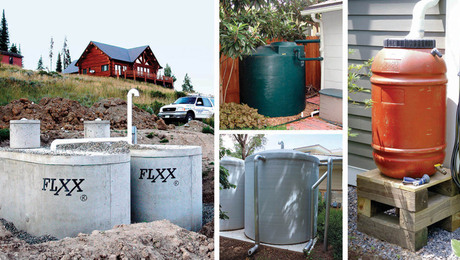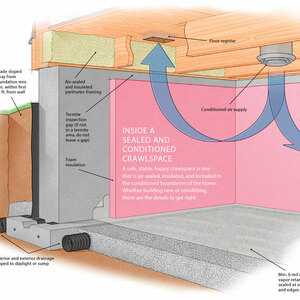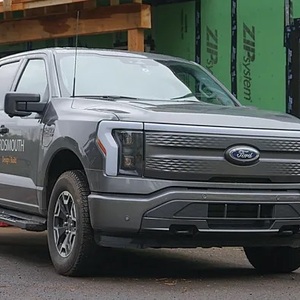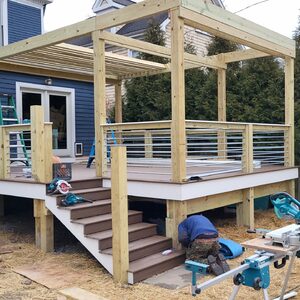In May I had a new 18×18 foot slab poured in my garage, reinforced with rebar and done with high strength concrete. It’s now mid-September and there is a crack all the way from one side to the other in the middle of the slab.
Is this typical? Is it realistic to try and have them repour it? Would I have been better off having expansion joints put in?
I know the one guarantee with concrete is it will crack, but why so soon?


















Replies
I'm not an expert, but when concrete cracks I suspect what's under the concrete rather than the concrete itself.
If you're absolutely certain there's rebar in it I wouldn't bother trying to re-pour. Too expensive, an the new slab might do the same thing anyway.
mw
Did they saw cut the slab?
As Boss suggests, a good base is key to any poured concrete slabs. How was the base prep'd?
Is there a drain or other penetration in or near the middle of this slab?
They didn't saw cut the slab, but perhaps they should have. No drain or anything in the middle of the slab. The base was compacted gravel, much of what I think has ben there for multiple decades.
This was done by a reputable concrete guy in town. Just not sure how I should play this. Seems to me the guy would want to stand by his work. It'd be one thing if it were three years from when he poured it. Not three months.
mw
The cut would have probably controlled the cracking-put it where they wanted it and nice and straight.
Did you keep the slab wet (damp) for at least a couple weeks (I've done longer) after the pour? Keeping the moisture on it really helps it reach it's rated strength.
Have you had them over to take a look?
Unfortunately, i wasn't advised to keep the slab wet or offered the option for expansion joint. The only advice was to keep weight off it for a week.
I'm hoping to get them over this week to take a look. I'm not confident much will come of it. What leverage do I have?
mw
Hopefully this link to a pdf gets to you.
There's some pertinent information in it on slab size relative to thickness and sawcuts, expansion joints against surrounding masonry etc.
http://www.nrmca.org/aboutconcrete/cips/06p.pdf
Keep in mind that concrete shrinks as it cures. Normally the slab would shrink together in one piece, but if the slab "hangs up" on something it may be pulled apart.
How wide is this crack, by the way?
lot of variables
, but most shrinkage craks will appear in the first few months.
The more excess water there is in the mix, the more shrinkage cracks you get. Too many slab finishers have too much water added to make it easier to pour and sreed, but added water makes weaker crete, more spalling, and more cracks.
Realistisc to call them back?
probably not - next time get someone with better reputation and comntrol the added water
You are right about concrete cracking.
Your 18' x 18' concrete slab should have had control joints ( troweled while wet or sawed the next day) down the middle both ways. That would cause the inevitable cracking to occur along these joints and less as visible.
Expansion joints would not be needed in this size slab unless it was poured within a confining perimeter wall etc. and then only around the perimeter. Even then this small a slab would likely not expand enough to require exp. joints.
Uness the crack is open, I doubt that the cracking is structural. A jagged crack running all the way across it just does not look nice. It is not unusual for the cracking to happen as soon as you described.
I my area of Illinois, I can't say I have ever walked into an interior slab that was relief cut. Been in a lot of basesments, garages, slab on grade businesses etc. Cracks are going to happen. I have one crack across my basement that has been there since we moved in brand new. Had they relief cut the slab, they would have put in at least 5 or six cuts width wise and likely three length wise leaving me with a bigger mess than the crack I have
Movement of the slabs apart or down is poor workmanship but I doubt you'll get much relief on simple cracks.